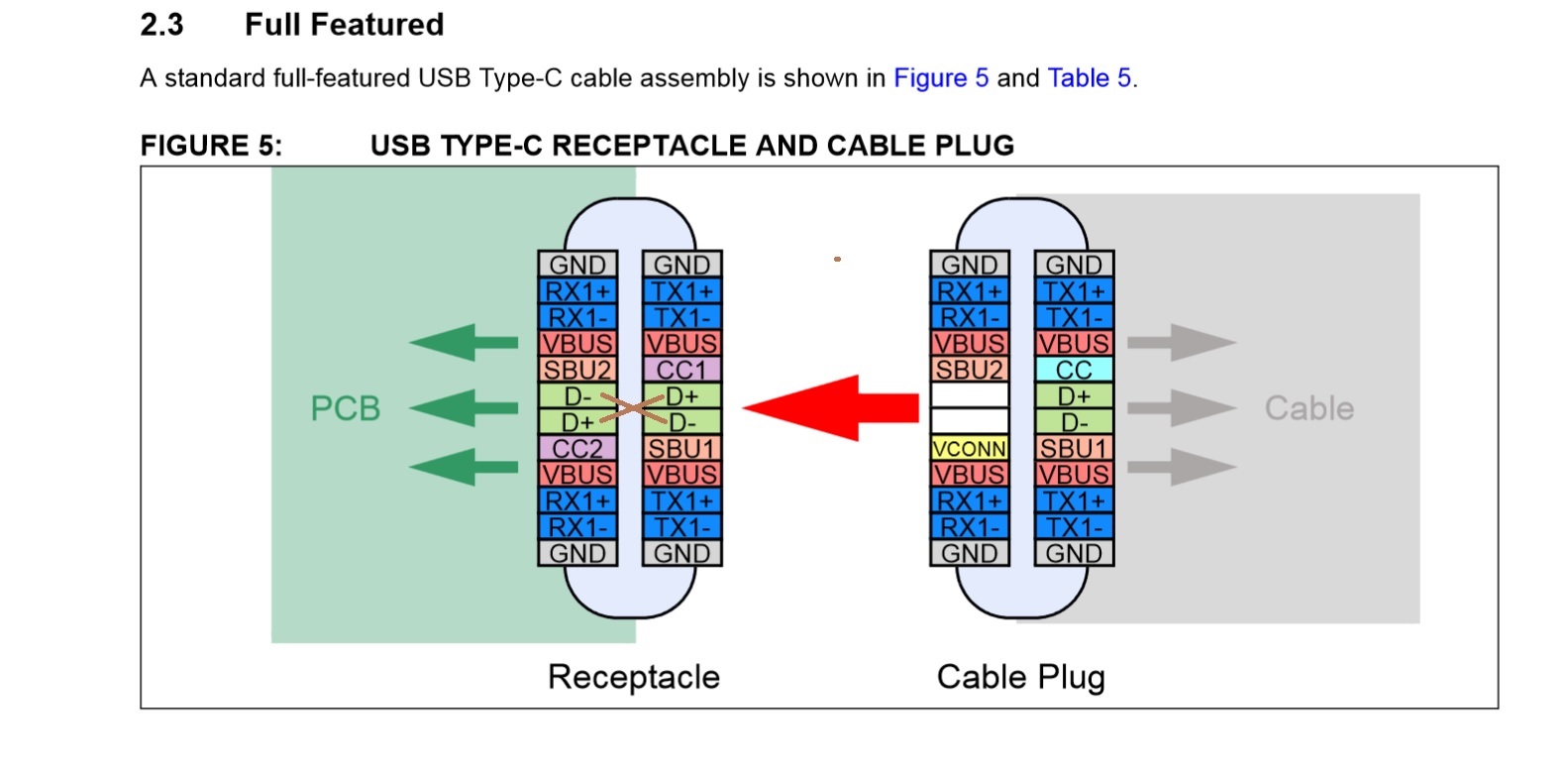Other Parts Discussed in Thread: TUSB8041A,
Hi,
To get a device that only needs a single USB cable, I have designed a board that will connect a camera and a microcontroller via the TUSB8041A hub. The connection to the PC is a USB type C plug that can connect to a PC with USB 2.0 / 3.0 / 3.1. This is my first take on a board with highspeed signals so the tracks are matched for length, but not impedance. The board kind of works, but only if I use a specific type and orientation of cables?
Here are the issues I'm having:
1. A USB 3.1 cable will not power the board, but both USB 3.0 and 2.0 will work.
2. My Mac will only recognise the Hub if the Type C cable to the Mac is rotated in a specific orientation. I presume this is since only one side of the DP/DN pair is connected at the Type C connector? (A7 + A6 connected, B7 + B6 not connected)
3. The board only connects to my Mac as a USB 2.0 device. It will not get a superspeed connection.
With the HD3SS3220 mux, USB Type C cables are supposed to work both ways and any Type C cable should power the board. I've used Application notes as well as resources here on the forum when designing the board, but I must have missed out on something important here? I'm uploading the schematics in hope that someone can point me in the right direction. Thanks!




